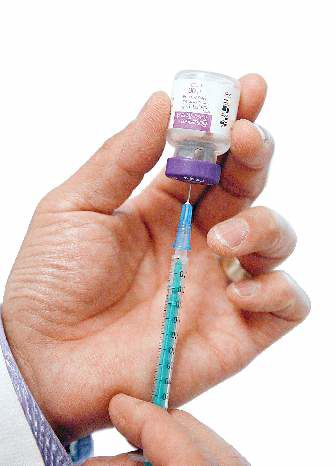web hed goes here
Published 4:00 am Wednesday, February 3, 2010

- Patients shouldn’t be afraid to ask for a deal or an introductory offer during their consultation.Andy TullisThe Bulletinfile photo
Put down the correction lift firming day fluid, the anti-aging night cream and the instant deep wrinkle filler.
“Women should quit spending hundreds if not thousands of dollars on expensive, rejuvenating, reparative cosmetics in their 40s, 50s and 60s and put the cash in a Botox and filler fund instead,” said Paula Begoun, who has 30 years of experience researching cosmetics and skin care. Begoun has written seven books on the subject, including “Don’t Go to the Cosmetics Counter Without Me.” She has used Botox and fillers for the past 10 years.
“The idea that cosmetics can work as well as Botox and fillers is like comparing a skateboard to a car,” she said. “The difference is huge.” Most patients use Botox to erase or minimize frown lines on the forehead and between the eyes and dermal fillers such as Restylane and Juvederm to restore volume, especially around the mouth to soften the “parentheses” that form there with age.
Despite saving women big bucks on overpriced, overhyped cosmetics, Begoun does not believe that consumers can shop around for the best price on Botox or fillers. It isn’t that she discourages it — it’s just that a consumer has to be incredibly savvy to do it, she said. Some dermatology or plastic surgery offices won’t reveal prices over the phone. Those that do might quote prices in different ways, by the unit of Botox or filler or by the area, such as a forehead. Making comparisons even more difficult, some doctors might use 40 units of Botox on an area, while others might use 80 units.
“You get similar results, but it’s a waste of money,” Begoun said.
Not all treatments are equal
Some dermatologists don’t think it should be so difficult. Dr. Tina Shaffer, a dermatologist at Dermatology Consultants in Eagan, Minn., encourages patients to call around but to ask a lot of questions to compare services. In my price comparisons by phone, Botox prices ranged from $10 to $15 per unit. If an office is charging $8 a unit, it’s possible that a nurse or an assistant is administering it, said Shaffer. It could also be an introductory low price to get a patient in the door, such as at Mahjouri Cosmetic Surgery in Plymouth or Fridley, Minn., which recently quoted a price of $10 per unit of Botox, which is administered by a doctor to new patients.
People can pay less and might get a good result, but some Botox users say they wouldn’t take the chance. “There’s an art to the administration of Botox and fillers,” said Christopher Hopkins, author of “Staging Your Comeback” and co-owner of reVamp SalonSpa in Minneapolis. After getting treatments for six years, he says each session is a little different. While customers can generally count on a Botox treatment lasting four months, some might only last six weeks.
Botox usage sagged a bit in 2009. Allergan, the maker of Botox, saw global sales decrease 6 percent in the first quarter and 3.2 percent in the second quarter to $336 million. The typical Botox user is not a rich cougar. She’s a married, working mother between ages 41 and 55, with a household income under $100,000, according to the Aesthetic Surgery Education and Research Foundation (www.aserf.org). Shaffer said that while her cosmetic business declined slightly last year, it has rebounded of late.
How to price it out
If you’re comparison shopping, you need to know the price per unit of Botox but also how many units a doctor typically uses for a certain area. No receptionist can say over the phone how many units of Botox a person will need, but a consumer can ask what the typical number of units is for a certain area.
Shaffer said that although she encourages people to shop around, sometimes a patient will ask for a price on Botox when a filler such as Restylane might be the better solution. If patients fear being priced out of their budget, they should tell the doctor about the areas of the face to focus on and their budget for it.
Dr. Spencer Holmes, a dermatologist at Park Nicollet in St. Louis Park, encourages patients to shop around for a doctor with experience in the procedure suggested and a good price. “A lot of doctors want to get you in the door and schmooze you,” Holmes said. Some doctors will have a free consultation and explain how much they can do for the patient. Holmes said patients should not be afraid to ask for a deal or introductory offer.
There’s potentially good news for the price-sensitive. Botox has had a monopoly since its launch, but it finally has a competitor, Dysport, recently approved by the FDA. Some dermatologists are starting to use it, but patients should wait until their doctor becomes familiar with it. Slightly cheaper than Botox, it might signal the beginning of a price war.







